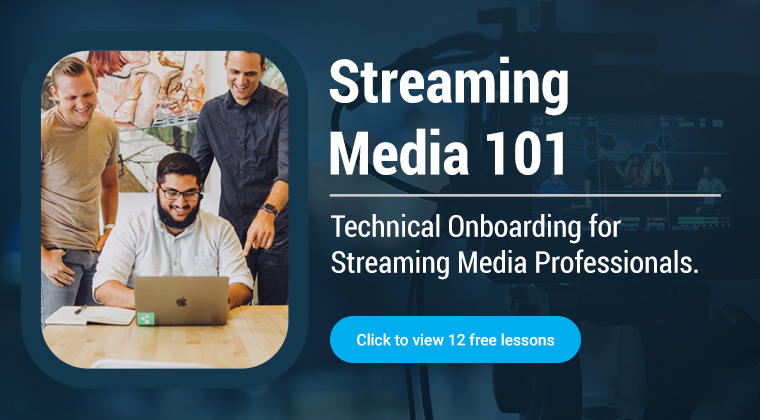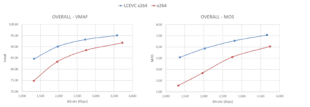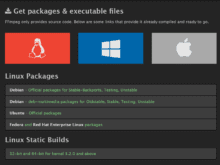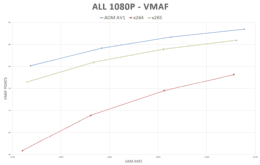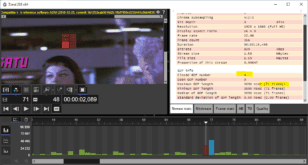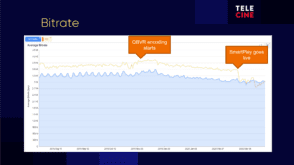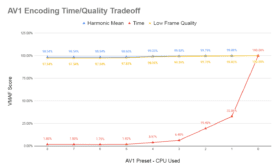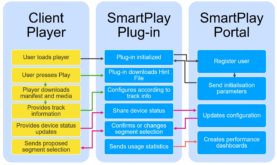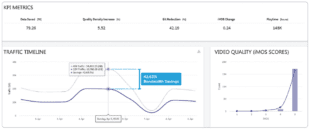Just a quick note to let you know that I’ve published a comprehensive report that documents the testing, quality, and performance of the Low Complexity Enhanced Video Codec (LCEVC) as developed by V-Nova and in the process of becoming standardized by MPEG. By way of background, I’ve been consulting with V-Nova to test LCEVC using a range of test files …
Read More »Zeranoe Resolves AV1 Issue; Now Faster Than aomenc.
Previous tests presented here showed that a Windows version of FFmpeg compiled by Zeranoe was about four times slower than a version compiled by a colleague who works in an OTT organization. Since then, Miguel Perez contacted the FFmpeg organization and Zeranoe, who researched the issue, recompiled, and created a new download that resolves the problem. To test the new …
Read More »AV1 Now Only 2X Slower Than x265
AV1 encoding on Windows is now only 2x slower than x265. With a properly compiled version of FFmpeg, encoding performance is slightly faster than the Alliance for Open Media’s encoder, though output quality is very slightly lower. Congrats to AOM for delivering on their promise to get encoding times down. Thanks for all the help I got from multiple sources, …
Read More »Netflix Addresses VMAF Hackability with New Model
Promising Initial Results with AV1 Testing
AV1 encoding is now only 2x slower than x265. See the latest results here. I began testing AV1 early this week. Briefly, my tests involve 16 ten-second clips in four genres (movies, sports, animations, gaming) and an “other” category (music video, nature video). I’ve completed the first set of tests with FFmpeg 4.3, benchmarking x264, x265, and the latest version …
Read More »Compressionists: You’re Only as Good as Your Tools
I’m reviewing AV1 encoders for Streaming Media Magazine and was performing some QC on the AV1 files that I produced with the latest version of FFmpeg. Two file details I always check are GOP size and whether the GOPs are closed or not. I check these for multiple reasons.
Read More »Telecine: MediaMelon SmartPlay Case Study
This article details how Brazilian OTT operator Telecine deployed MediaMelon SmartPlay and decreased bandwidth costs by about 42% while improving the MOS quality of the video delivered. SmartPlay also helped Telecine manage the 4X increase in demand due to COVID-19. This is the third and final story about MediaMelon SmartPlay. The first article describes how SmartPlay works and the benefits …
Read More »Choosing the Optimal Preset for AV1 Encoding (and Other Questions)
AV1 encoding is now only 2x slower than x265. See the latest results here. I’m comparing AV1 encoders for Streaming Media Magazine. I plan to include codecs from: The Alliance for Open Media (hopefully versions 1.0/2.0) Visionular Intel Mozilla (Mozilla is out – didn’t respond to my inquiry). If there are any other codecs that should be considered, please get …
Read More »Integrating SmartPlay into Your Encoding and Distribution Ecosystem
In the previous post, I described what MediaMelon SmartPlay is and identified some of the benefits. In this post, I’ll discuss pricing and how to integrate SmartPlay into your encoding, delivery, and playback infrastructure. Pricing Overview Let’s briefly discuss the SmartPlay pricing model here and look at ROI at the end of this document. There are two pricing models. The …
Read More »How MediaMelon SmartPlay Saves Bandwidth Costs and Improves QoE
MediaMelon’s SmartPlay is a streaming optimization solution that reduces bandwidth use by 35% or more and improves QoE while working with your existing ABR content without reencoding. As you’ll read in this post, SmartPlay works by analyzing the quality of every segment in an ABR package and producing a hintfile used by the SmartPlay plug-in installed in the player to …
Read More » Streaming Learning Center Where Streaming Professionals Learn to Excel
Streaming Learning Center Where Streaming Professionals Learn to Excel

